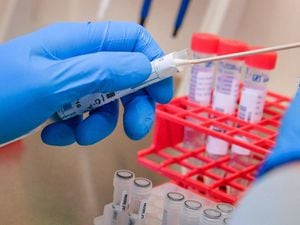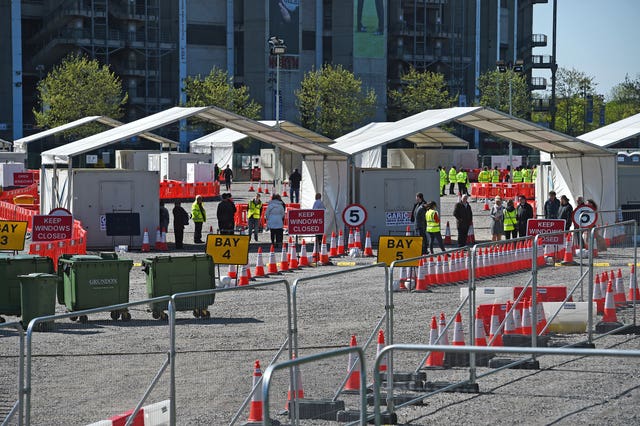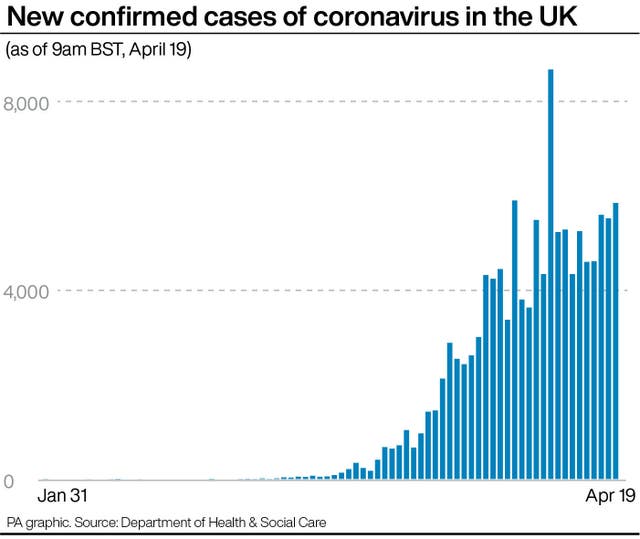How does a vaccine get licensed for use in the UK?
There are a number of steps required before a vaccine can be approved.

Scientists are racing to develop a vaccine for the coronavirus, with a team in the UK saying that clinical trials could start by the end of the week.
But what needs to be done before a vaccine can be used on the general population?
– What is a vaccine?
Vaccines harmlessly expose viruses or bacteria to the body’s immune system, causing it to recognise them as dangerous and learn how to resist them.

This means that if the body comes across the infection, it knows how to defend itself.
– What are the first tests that vaccines go through?
Once scientists have developed a new vaccine, it has to go through laboratory testing and development, which involves “in vitro” testing – test tube experiments – and “in vivo” testing, which is usually on animals, often mice.
After researchers put the vaccine through rigorous tests and can demonstrate that it works in animals, they can move on to an initial trial in a small number of humans.

– What tests are done on humans?
An initial phase one trial is usually carried out on a small group of up to 100 people to make sure the vaccine has no major safety concerns and to allow scientists to work out an effective dose in humans.
The phase two study is carried out on a larger group of around several hundred people to check if the vaccine works consistently and generates an immune response, as well as to look for possible side effects.
Then a much larger phase three study – potentially on several thousand people – can be carried out which allows scientists to gather statistically significant data on a vaccine’s safety and efficacy.
This means looking at whether the vaccine generates a level of immunity that would prevent disease and provide evidence that the vaccine can actually reduce the number of cases. It also gives a better chance of identifying rarer side effects not seen in the phase two study.

– How long do clinical trials take?
Phase one clinical trials can last between 12 and 18 months, phase two for two or more years and phase three can last three to five years.
This means it can take anything from six years to complete the clinical trials needed to apply for a licence for the new vaccine.
– How is a new vaccine licensed?
If all goes well, the next stage involves an expert review of all trial data by the Medicines and Healthcare products Regulatory Agency (MHRA) or the European Medicines Agency (EMA).
The regulators check that the trials show that the product meets the necessary efficacy and safety levels. They also make sure that, for most people, its advantages far outweigh the disadvantages.
After the expert review, the regulator can grant a licence for the vaccine which confirms the medical condition the medicine should be used for and the recommended dosage.
– How long does it take to be granted a licence?
There are a number of different licences, depending on where the producer wants to market its vaccine.
If a vaccine already has a national licence for a country in the EU, it can take up to 90 days to extend it to other member states, but new licences can take up to 210 days excluding any time taken to provide any further information or data, the MHRA’s website said.
But some medicines can be fast-tracked if there is “compelling” evidence the product will be a major breakthrough in the treatment of certain conditions.
These include chronic, debilitating diseases, severe or life-threatening diseases, and the emergence of a new disease entity which has severe or life-threatening effects and for which currently available treatments are ineffective or inadequate.
– Is there a way to speed this up?
The MHRA has said that in order to accelerate development of a vaccine it may be possible to overlap the three phases of clinic testing and accept less complete data than it would normally expect.
It says there is an “absolute” need for phase one of clinical trials and it would be “unlikely” that a licencing decision would be on animal data only.
However, it added that if data from the study was “persuasive of an immune response in humans” then it would be “conceivable” to grant an early licensure as Conditional Marketing Authorisation but with “significant uncertainty” concerning the safety and efficacy of the vaccine.
– How are vaccines monitored after they are approved?
Post-marketing analysis is conducted to monitor the effects of the vaccine after it has been used in the population.
The vaccine is also monitored in the UK through the MHRA’s Yellow Card scheme, with reports of suspected side effects sent in by drug companies, health professionals, and patients themselves.
– What happens if new side effects appear after a vaccine is in wider circulation?
If a previously unidentified reaction emerges, or the frequency of reactions is not in line with what is expected, then the MHRA can investigate.
After an investigation, the MHRA can lead to changes in the licence or take action such as changing the warnings in the product information.
It can also change the legal status of a medicine from over-the-counter to prescription-only or in rare circumstances remove the medicine from the market.





